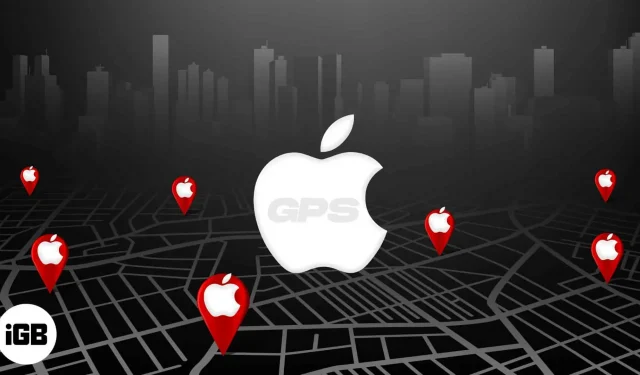What is dual-frequency GPS in Apple Watch Ultra and iPhone 14 Pro series

Apple introduced a wide range of devices at the Far-Out event. Throughout the event, I noticed that Apple emphasized one factor that kept repeating itself: better connectivity. While satellite, compass waypoint, and backtracking are some of the features that have garnered attention, the latter relies heavily on the dual-frequency GPS introduced with the iPhone 14 Pro and Apple Watch Ultra series.
Since most of us use GPS on a daily basis, we have a basic understanding of what it is and how it works. However, let’s recap how much we know about GPS and then delve deeper into understanding dual frequency GPS and why Apple is finally bringing it to their devices.
What is GPS and how does it work?
Source: spaceplace
The Global Position System (GPS) is a satellite based radio navigation system originally developed for military use that was adopted for civil navigation purposes in the 1980s. The Government of the United States of America owns and operates GPS.
GPS operates on a constellation of satellites that work together as a system. Several other countries have launched their own systems, consisting of several active satellites orbiting in space. Apple includes most of these systems in its devices.
GPS operates on a predetermined frequency system, just like any other electronic system. Since there are different frequency bands, they are divided into bands for easier identification. GPS uses three frequency bands: L1 Band, L2 Band and L5 Band.
What is dual frequency GPS and how does it work?
Source: Apple
Dual frequency GPS is when the device uses two frequency bands at the same time. While most devices operate in a single frequency band, the L1 band, companies can and do build devices that use a pair of frequency bands instead of relying on just one for improved accuracy.
The dual-frequency system implemented in the iPhone 14 Pro and Apple Watch Ultra uses two frequency bands (L1 and L5 bands) at the same time.
But isn’t iPhone GPS accuracy already great on iPhone 13 and below? All of a sudden, why did Apple feel the need to introduce dual frequency GPS into their devices?
Why does Apple use dual frequency GPS?
Source: Apple
The main reason for using dual frequency GPS is to improve accuracy. As mentioned, the two frequency bands work in unison to make this easier, and in most cases this is the L1 band paired with the L5 band.
Although the L1 range is the oldest, it is accurate and reliable. However, the main limitation of the L1 range is that the frequencies it relies on are not strong enough to pass through tall buildings, huge trees, or dense foliage in general.
And this is where dual-frequency GPS shines. The L5 band eliminates the limitations of the L1 band and provides better signal processing. So, why shouldn’t companies use the L5 range and abandon the L1 range entirely?
Because the L5 band is in pre-operational phase and cannot function independently, companies use dual frequency GPS so that users don’t get stuck if there is any problem with the L5 band.
Another thing to note is that Apple’s implementation of dual-frequency GPS is not an industry-first feature, and several other smartphone manufacturers have been using it for a while.
You have arrived at your destination
There are many benefits to using dual frequency GPS and I’m glad that Apple has finally joined in the win and we now have an improved GPS navigation system. The benefits of using dual frequency GPS may not be immediately obvious, but it certainly has a positive effect.
If you’re using any of the new iPhones or Apple Watch Ultras and notice any changes to the GPS on your devices, please let me know in the comments below. I hope this article has helped you understand dual frequency GPS and why Apple uses it.
Leave a Reply